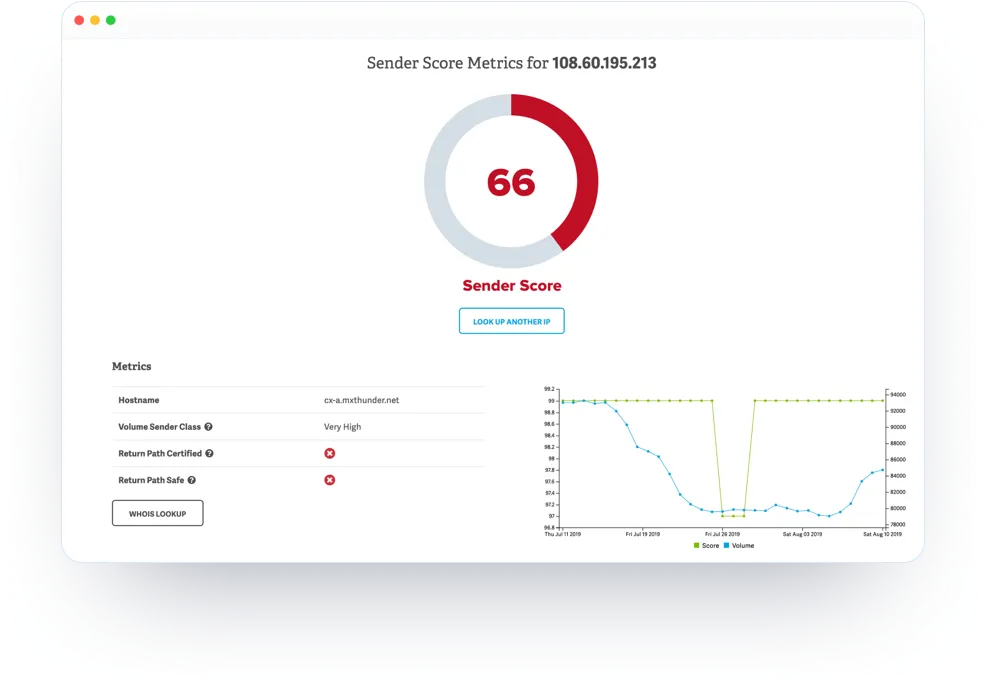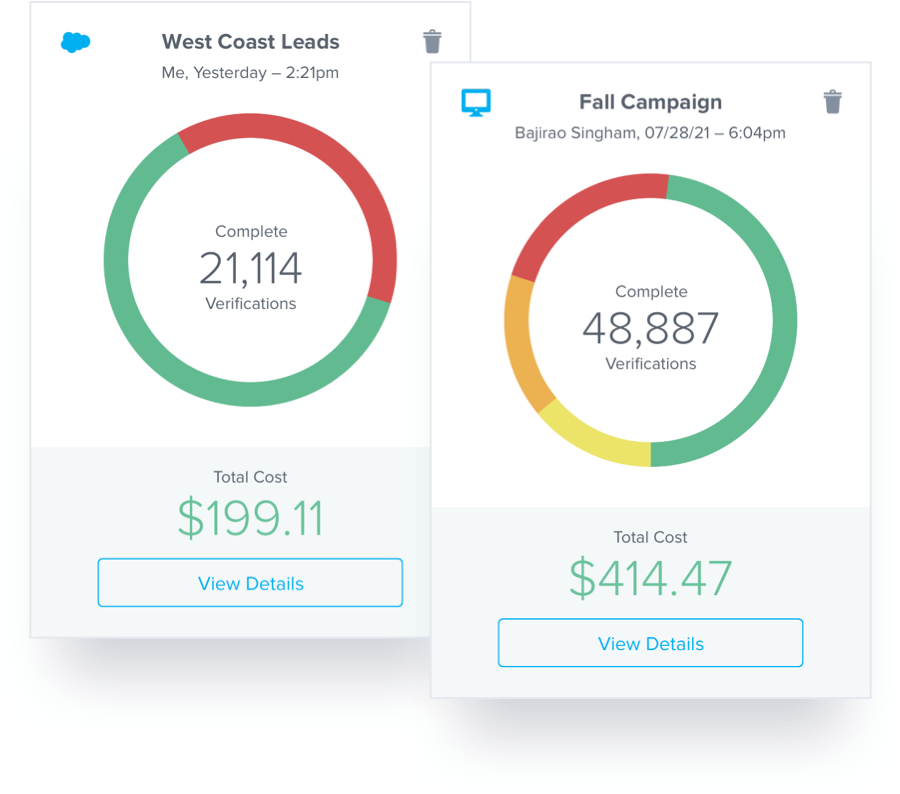Domain reputation vs. IP reputation
IP reputation is when your reputation score is determined by your IP address. Every email message is sent from a specific computer or server that has an identifying address. This is the IP address, through which mailbox providers recognize and judge your emails.
However, IP reputation is also impacted by if you’re using a new IP address and/or a shared IP. If you have a new IP address, your reputation is scrutinized because you don’t have an established sending history. Meanwhile, through a shared IP, your reputation is affected by the actions of all other senders that use the same IP. If they make poor sending decisions, some mailbox providers may decide to block you along with them.
Domain reputation is when your reputation score is also factored on the domain level, independently from your IP address. Your domain reputation is associated with the specific and separate domains, instead of individual IPs, from which you send emails. Senders with a good IP reputation but a bad domain reputation will still have difficulty getting into subscribers’ inboxes. Although they are independent reputation signals, mailbox providers usually consider both when determining what emails will land in inboxes.
“We were struggling with inbox placement with certain mailbox providers and our emails being sent to spam. Prior to this campaign, we worked to improve our sender reputation. By the time we were ready to launch the campaign, we finally felt confident enough to send it to our full subscriber list.”
Does sender reputation affect email deliverability?
Your sender reputation is one of the main factors that mailbox providers consider to determine your email deliverability — meaning where your email goes. This will help determine whether it goes into the main inbox, straight to the spam folder or blocked. To ensure great email deliverability, you need a good sender reputation.
To improve inbox placement for your email messages, check your domain reputations and IP reputations regularly and address any factors that may put your reputation at risk.
For more tips, here’s a deeper dive into sender reputation.
How to check sender reputation
Mailbox providers track the domains and IPs associated with your email messages and, subsequently, how subscribers have engaged with your messages to determine your sender reputation. Each mailbox provider then uses its unique algorithm to give your domain and IPs a reputation score. This score will significantly impact whether your messages get delivered to the inbox, the spam folder, or are blocked by the mailbox provider.
So how do you check your domain reputation to better understand how mailbox providers view you as a sender? Senders can use Gmail Postmaster and Microsoft SNDS to check their reputations.
You are also able to check your IP reputation scores through Sender Score, a service provided by Validity.
Do you know your Sender Score?
Check it for free.

How to improve your domain reputation
Does your sender reputation need a tune-up? Try this 5-point inspection to keep your email program in gear.

Below is a list of best practices to follow to improve your domain reputation:
Analyze your bounces
Bounces act as red flags and can harm your reputation score, so it’s important to lower them as much as possible.
Check feedback loops
Feedback loops (FBLs) allow mailbox providers to view when recipients have “complained” about their messages, specifically if subscribers have marked your messages as spam or blocked you. The higher your complaint rate, the more likely a mailbox provider will block your messages or deliver them to the spam folder. By checking your FBLs, you can analyze which messages are receiving complaints and strategize how to fix the problem.
Regularly monitor and cleanse your email list
Learn more about how Validity BriteVerify can help you clean your email lists.

Make sure your email content is relevant
Establish a separate subdomain for key message streams
It’s also best practice to send transactional emails, such as subscriber account activity or purchase confirmations, from a specific subdomain. By keeping transactional messages in a separate subdomain, you can help ensure the reputation of your marketing messages does not negatively impact the inbox placement for these critical messages.
Optimize your contact strategy
With Validity, businesses both small and large can use our diverse array of services to monitor and improve their domain reputations. Everest, our comprehensive email success platform, will give you crucial, real-time insights and deliverability guidance to help you to improve your domain reputation. We also offer Sender Certification, which is the only sending practices program that helps senders maintain high inbox placement rates with top mailbox providers. Meanwhile, our BriteVerify product can reduce your bounce rate by verifying that your list only includes legitimate subscribers.
Schedule a free demonstration to see how Validity can improve your sender reputation so you get more messages to more people.